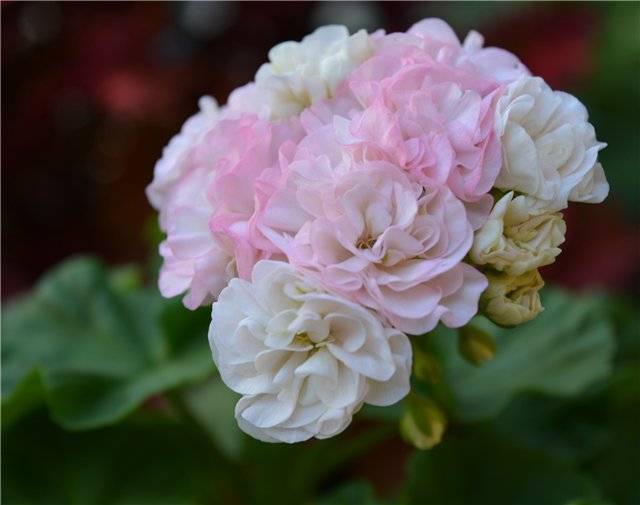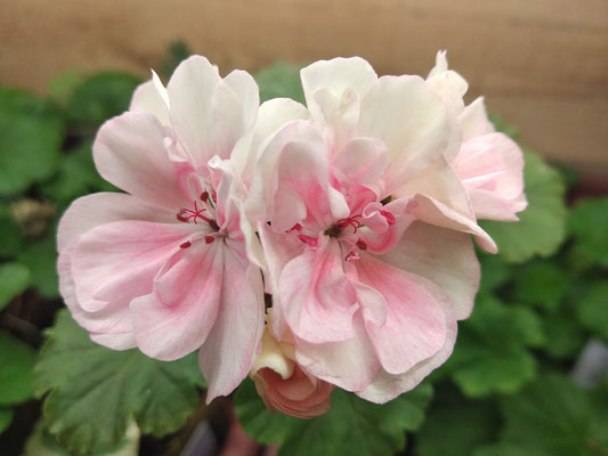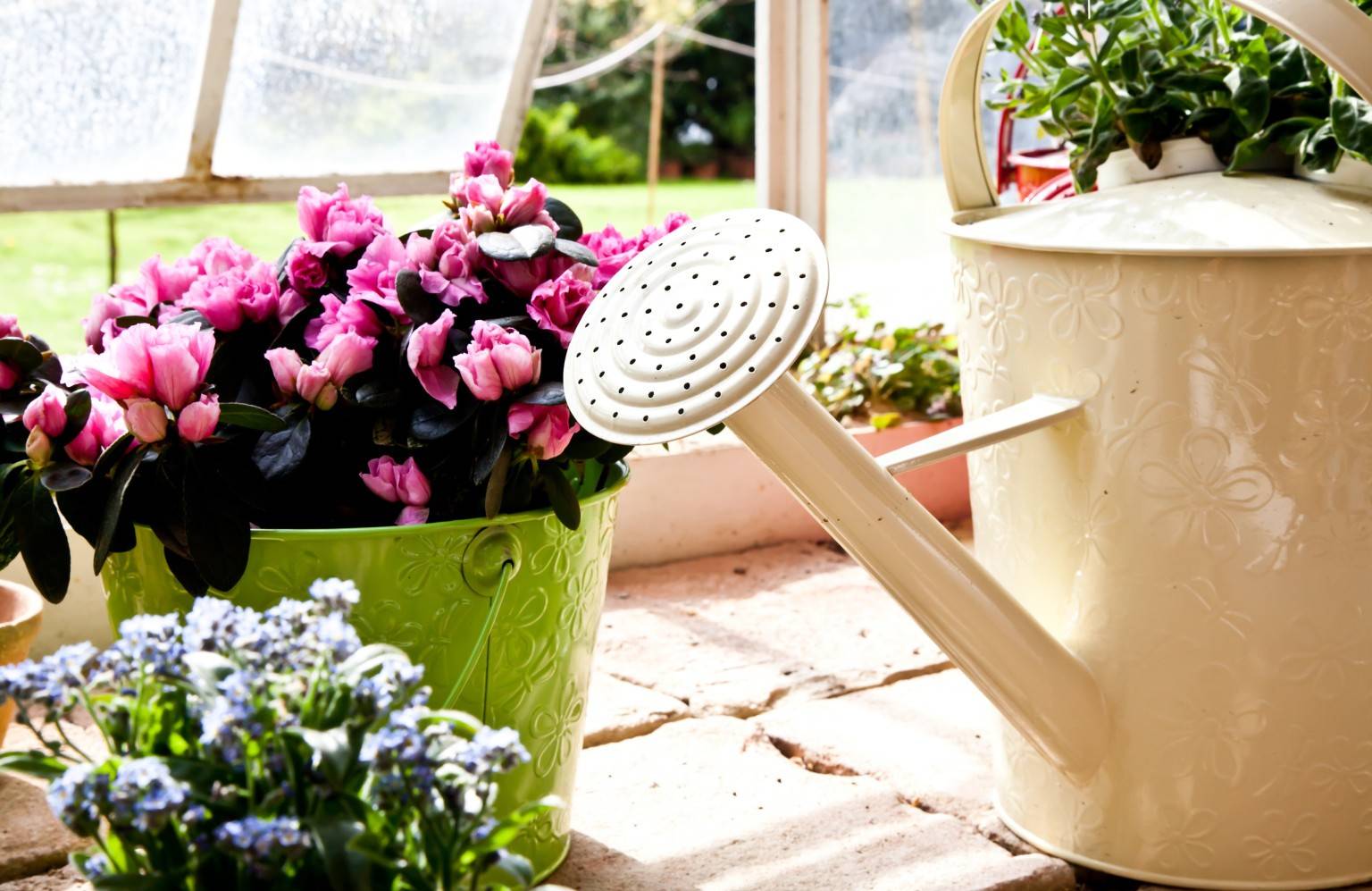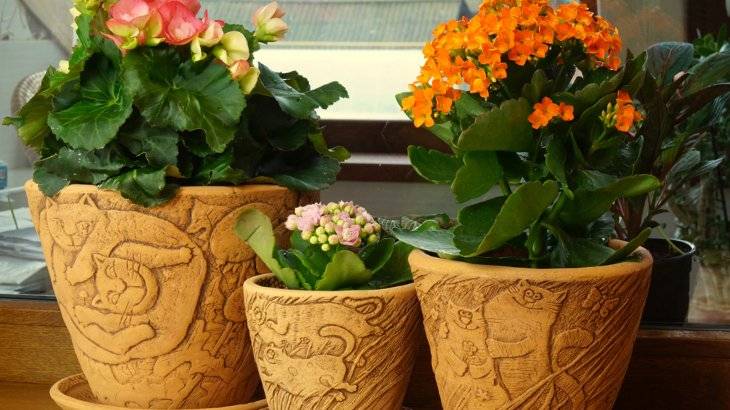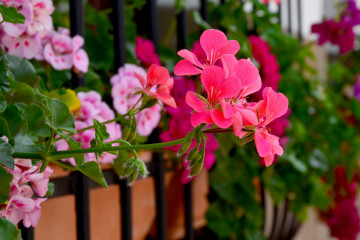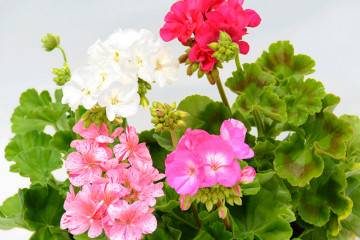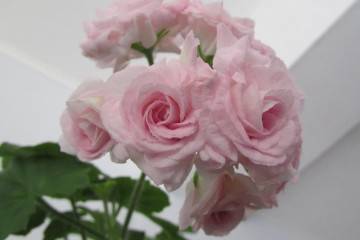Pelargonium Yug Shukar, Aksinya, Ireland and other varieties
Content:
For many decades, pelargonium was considered a plant of aristocrats. In their greenhouses and gardens, it was grown by very wealthy owners of villas and mansions. In Russia, the period of popularity of this amazing flower was replaced by an era of oblivion. Many will surely remember that there was a time when pelargonium was called nothing more than a bourgeois flower. However, years passed, and flower growers again remembered this luxurious flower, and therefore clubs of geranium lovers began to appear. Thanks to the efforts of breeders, more and more new shades and shapes appear. The article below will talk about the Yug-Shukar flower - pelargonium, which includes several varieties. She was bred by Y. Gonchar.
What is this variety of flowers
Pelargoniums of all varieties belong to a family called Geraniums, which unites several hundred different plant species - herbaceous, dwarf shrubs.

Original colors, beautiful leaves, undemanding care - all this is about the varieties of the YUG group.
Pelargonium flowers are inflorescences in the form of umbrellas, which are characterized by a wide variety of shades: from snow-white to purple, burgundy and red. In this case, the colors can be either monochromatic or combined.
Brief description and history of selection
Amateur flower growers would never have been able to plant these amazing pelargoniums if it were not for Y. Gonchar. The abbreviation that can be seen in the names of the varieties is the initials of the breeder from the Voronezh region. The potter bred rather compact pelargoniums, which are characterized by lush flowering.
Varieties of indoor plants with names
This group of pelargonium includes several varieties. All of them differ from each other in the shape of flowers and leaves, color. The most popular varieties bred by Y. Gonchar are described below.
Yug-Shukar
This spectacular variety belongs to the group of zonal pelargoniums. The flowers are ordinary or double, which have a cherry-scarlet hue. The plant needs regular pruning, otherwise it will lose its decorative shape. The foliage of the pelargonium is a rich green color.
Yug-Yadviga
Pelargonium Yug-Yadviga is a strong compact bush, literally covered with bright pink flowers. The plant does not require formation, in itself it is quite neat. The leaves of Jadwiga are ordinary green.
Yug-Barbara beauty
Yug-Varvara beauty - pelargonium, which is called one of the most compact among those bred by Y. Gonchar. The bush has the correct shape, it is neat and dense. It doesn't need formation. Terry buds of a delicate pink shade are more like miniature roses or peonies than geraniums.
Yug-Sakura
It is easy to guess that this variety got its name due to its amazing similarity with Japanese cherry. The flowers are characterized by a light pink shade, from the center of each flower to the edges bright rays of a crimson tone diverge. The leaves are quite dense with small denticles at the edges.
Yug-Zlatoslav
Zlatoslav's dwarf pelargonium differs from other varieties of Y. Gonchar by the original golden tint of foliage. The flowers are wavy, their color is purple-pink.
South-Claudia
Pelargonium of this variety is called one of the most delicate. A small compact bush with leaves of a rich green tone is decorated with lush caps of white and pink buds.
SOUTH Princess Grace
It is no coincidence that this flower received its royal name. Princess Gray - the true embodiment of tenderness - will take its rightful place in the collection of any grower. A neat rose bush has rough leaves of a pleasant green shade and rather large buds of a pale pink shade with overflows.
Yug-Nina and others
Depending on the season, the color of the petals of the YUG-Deya variety changes: in the summer it is salmon pink, in the spring it is white with a subtle pink blush, in the fall it is pale pink.
Another incredibly tender pelargonium is Yug-Nina. Golden foliage with an exquisite brown border around the edge is combined with dense double flowers, which are characterized by a pale pink hue and a barely noticeable purple tone.
Pelargonium Yug-Kamaliya belongs to the dwarf group. The variety is distinguished by long flowering, lush pink double flowers. The inflorescences seem to be disheveled, they look really unusual.
White-pink pelargonium YUG-Sigal, according to gardeners reviews, with proper care has dense double flowers, reminiscent of mini-heads of ornamental cabbage. In direct sunlight, the flowers acquire a rich pink tone.
A bright reddish-crimson tone with a white glow, long peduncles are Pelargonium Yug-Aksinya. Delicate pink color and original two-color leaves - this is the beauty of Yug-Bibigul. Pelargonium SOUTH-Ireland is a fluffy bush with snow-white inflorescences. And the pink center and white edges is a variety called YUG-Yesenia.
In addition, today such varieties are known as YUG-Polina, YUG-Giselle, YUG-Tamila, YUG-Michel, YUG-Siberia, etc.
How to care for Yug plants at home
Like other pelargoniums, the varieties of Y. Gonchar are unpretentious. However, in order for the plants to fully show all their decorativeness, it is necessary to provide them with comfortable conditions.
Illumination and temperature conditions
This culture can be classified as light-loving. Experienced flower growers recommend placing pelargoniums on the south or east side. To ensure that each side of the bush receives enough light, you should turn it from time to time.
In spring and summer, it is necessary to maintain an air temperature of about 20-23 ° C, during the rest period, about 15-17 ° C should be ensured.
Watering rules and humidity
The moisture level suitable for pelargonium is 60%. In this case, the plants do not need to be sprayed. Watering should be moderate, moisture stagnation is unacceptable.
Top dressing and soil quality
The soil should be nutritious and loose. It is important that the soil is breathable. You can purchase a universal mixture in the store or make it yourself by combining in equal parts:
- leafy ground;
- humus;
- turf;
- peat;
- sand.
Fertilization is recommended only during the warmer months when plants are developing and forming flowers.Special mineral complexes are suitable for feeding.
Flower container size
It is better to choose a small container for pelargoniums of the group in question, otherwise the plant may stop flowering. In addition, in small containers or pots, these flowers will hold their shape better.
Pruning and replanting
Pelargonium needs sanitary pruning annually. It is best to carry out this procedure in March. Cutting must be done diagonally, using a sharp knife.
Features of flowering plants
The peculiarities of plant care and its appearance differ depending on the period of time.
A period of activity and rest
In the winter months, the Pelargoniums of the South are dormant. For this time, containers with them are recommended to be transferred to a cool, often ventilated room, to reduce watering. The plant should be in this state from November to February. A period of active growth begins in the spring. The plant requires a lot of strength, and therefore it is important to fertilize and moisturize it in a timely manner.
Types and shape of flowers
Pelargonium flowers Yu. Gonchar differ in color and shape. The color can be white, deep red, delicate or bright pink. As for the forms, such pelargoniums are distinguished as:
- simple. Their petals are in one row;
- semi-double. Each flower has two to three rows of petals;
- terry. Pelargoniums are characterized by the presence of several rows of petals.
Flower reproduction methods
Pelargonium can be propagated either by cuttings or by dividing the bush.
When the plant fades, it is necessary to cut off the stem, which has at least three leaves. It should be immersed in water, and when the roots appear (usually after 14-17 days), the plant should be planted in a prepared container.
When propagating by dividing the bush, you should remove the plant from the pot, carefully remove the soil from the roots and separate them. At least two or three buds should remain on each part of the pelargonium. The resulting bushes will remain to be planted in separate containers.
Growing problems, diseases and pests
Florists say: Pelargoniums of the YUG group are distinguished by strong immunity. However, sometimes they are struck by diseases such as:
- root rot;
- gray mold;
- rust.
The likelihood of damage to plants by caterpillars, slugs and aphids is quite high.
How to deal with them
For prophylaxis, plants should be treated with antifungal drugs. If the disease begins to progress or pests are found on the flowers, it is recommended to use fungicides.
From all of the above, it is easy to understand that Y. Gonchar's pelargoniums allow, with minimal care, to get a spectacular and bright houseplant that will delight the eye for a long time, become an original interior decoration, and even add bright colors to a boring space.
